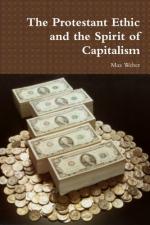
|
Chapter 1: Religious Affiliation and Social Stratification
• The author shows statistics that state a large percentage of leaders and businessmen are Protestants.
• He says that historically, those who were wealthy and successful were following ideals that are now major Protestant tenets.
• The Reform was meant to fix the control of religion over the people and make it more successful. The Catholics were seen as too lax on sinners.
• The author talks about educational circles and makes claims that Protestants are more likely to pursue and be successful in degrees.
• Most Catholics go to school to learn a craft while Protestants go to learn how to take a craft and make it profitable.
• Protestants are shown to be successful in business and life even during religious persecution. This is not something Catholics are known for.
• Protestants are known for being hard workers and leaders in industry. Many instances of high...
|
This section contains 1,683 words (approx. 6 pages at 300 words per page) |

|




